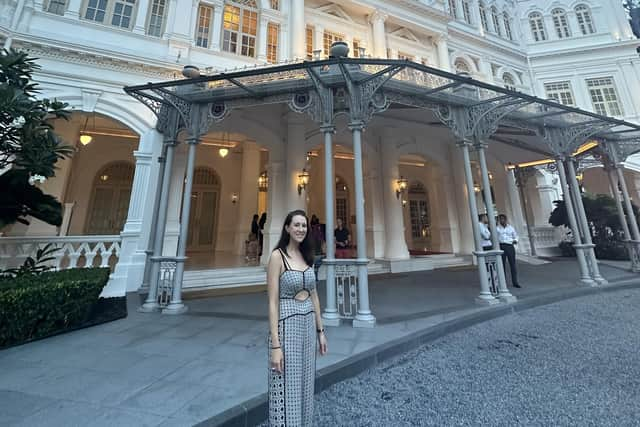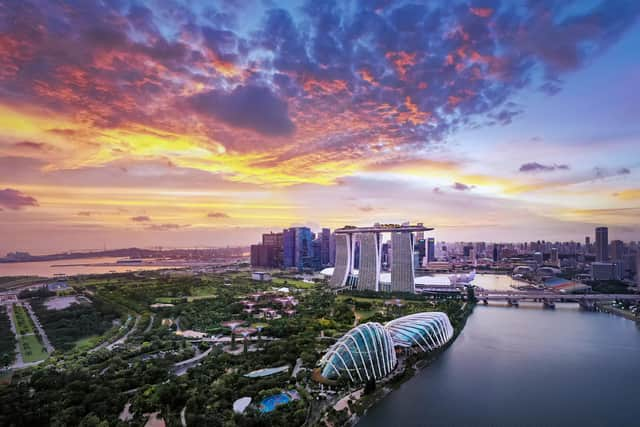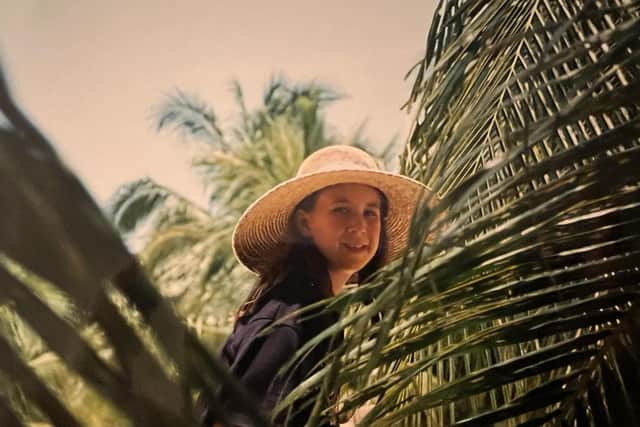How Singapore has changed in the 25 years since I left
People often think of the tiny island city of Singapore, just north of the equator off the tip of the Malay Peninsula, as a layover stop en route to somewhere else.
Those who do leave Changi Airport (just voted the best in the world for the 12th time, so there are worse places to wait for a flight) might spend a day or two barely scraping the surface of this wonderful country.
Advertisement
Hide AdAdvertisement
Hide AdI’m biased, admittedly, having spent six years of my childhood living here in the Nineties. Now I’ve returned 25 years after leaving the Southeast Asian hot spot famous for its high-rises, humidity and being meticulously clean and safe.


It’s easy to sum Singapore up with generalisations though (it’s true you can’t buy chewing gum or take the strong-smelling durian fruit on the subway, to mention some of the lighter laws), but there’s a lot beneath the strict, shiny exterior.
Space has always been a bit of a challenge here. With a population of 5.5 million crammed into a 700 sq km space, authorities have been forced to build upwards outwards – expanding the island by 25 per cent of its original size.
A quarter of a century ago, I remember the vast green open space of newly reclaimed land on the south coast; people used to jog around it.
Advertisement
Hide AdAdvertisement
Hide AdNow it’s one of Singapore’s most recognisable areas for tourists, the spaceship-looking Marina Bay Hotel with its Instagram-famous infinity pool hovering 57 floors up, and Gardens by the Bay with its illuminated Supertrees.


The best place to survey the new skyline is the hotel’s SkyPark observation deck, around 200 metres high. There are long-standing tower blocks I still recognise, like the AXA Tower, the world’s tallest cylindrical building, and the Gateway, which looks paper thin from a certain angle – both were feats of architecture at the time of their building in the late Eighties and early Nineties.
Now newer structures, like the Esplanade – Theatres on the Bay – a durian-shaped dome – make up the ever-changing landscape. It’s hard to believe that before the British arrived in 1819, this place was a sleepy fishing village of just 500 inhabitants, finally gaining independence from Malaysia in 1965.
One green space that has been here a long time, right back to 1895, is the 82-hectare Singapore Botanic Gardens. The closest greenery to my childhood home, it’s since gained UNESCO status. Between the ages of eight and 14, I remember tearing through these curved pathways on my bike and running around after my brother amid the perfectly manicured lawns and lakes. As I walk through now it feels so familiar, although there’s little relief from the humidity – you need Singapore’s famously cold air conditioning for that.
Advertisement
Hide AdAdvertisement
Hide AdThe covered walkways in the traditional ‘shophouses’ (two or three stories instead of 50) still offer relief from the sun (year round) and rain (short, sharp storms in the four-month long monsoon season). The shophouse businesses in Little India have long histories and it feels like time has stood still, while the Muslim quarter, Kampong Glam, is now painted in colourful hues and made up of sleek boutiques and trendy coffee houses around the golden-domed Sultan Mosque.


When you look above traditional low-rises you’ll probably spot a towering HDB. Built by the government’s Housing Development Board, these heavily subsidised buildings are a source of pride for the island state. Some 77 per cent of Singaporeans live in HBDs, meaning that the vast majority are home owners once they pass the criteria of being married or over 35 to qualify. “People don’t propose, they say, ‘Shall we get an HBD together?’” jokes my tour guide Toon Hee, as we walk through residential area Ang Mo Kio.
Despite being one of the most expensive countries in the world to live in, there’s very little poverty in Singapore. One thing that isn’t expensive, however, is eating out in a hawker centre – a concept that started in the Eighties when all of the street food stalls were rehoused into undercover markets with water and drainage systems. Now the hawker scene, made up entirely of individually-owned eateries, is an essential part of Singaporean culture and an everyday occurrence for many people.
Nasi goreng (stir-fried rice and meat topped with fried egg) and Hainan chicken rice (the rice itself is cooked in chicken stock) featured heavily when I was growing up. I’d tuck into big plates of it at Adam Food Centre, which is still going strong some three decades later and now known for being one of the best places for nasi lemak – rice cooked in coconut milk and pandang leaf. At the other end of the spectrum, Singapore is fast becoming a culinary destination for its high-end restaurants. While some 77 per cent of Singaporeans are of Chinese heritage, Malay and Indian lineage feature too. There’s also a lesser represented cultural identity here – Peranakan, referring to a number of mixed heritage communities. The newly opened Peranakan Museum gives a poignant journey through the history, and TV chef Damian D’Silva is painstakingly recreating and celebrating the cuisine at his restaurant, Rempapa.
Advertisement
Hide AdAdvertisement
Hide AdYou can’t leave Singapore without sipping a Singapore Sling at its birthplace. Even as a child I knew the significance of the Raffles hotel. A perfectly preserved piece of colonial architecture built in 1887 and named after ‘founding father’ Sir Stamford Raffles.
To really come full circle I stroll past the shops on Orchard Street, where I used to meet friends for coffee, through the still-bustling Boat Quay, and down the long road I used to live on until my old block of flats comes into sight. It’s warming to see that while so much in Singapore has changed, some things special to me remain.
visitsingapore.com/en
Comment Guidelines
National World encourages reader discussion on our stories. User feedback, insights and back-and-forth exchanges add a rich layer of context to reporting. Please review our Community Guidelines before commenting.